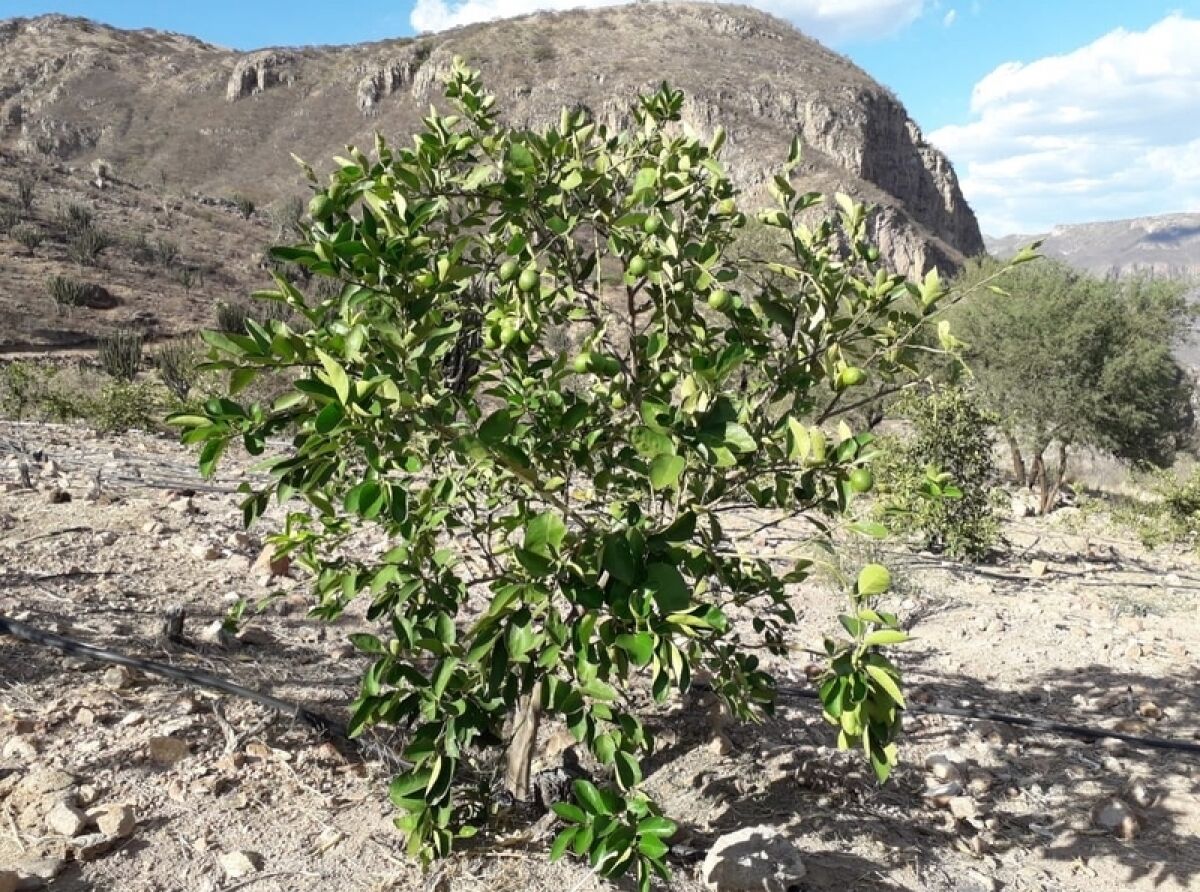The pilot project to induce the production of Persian limes in the Northern Region of Jalisco has shown good signs one year after the 21 hectares were established in the municipality of Bolaños.
This reported by the head of the Jalisco office of the Ministry of Agriculture and Development (SADER,) Salvador Álvarez García.
He mentioned that this project was supported within a Territorial Development Program in the microclimate of lands of the Bolaños River, where there are generally no frosts, favoring the growth of citrus. The project was conceptualized as a tool that can be replicated in other municipalities within the canyon of the aforementioned river, such as Chimaltitán and San Martín de Bolaños.
Álvarez García highlighted that this project fits into the priorities of the Government of Jalisco to promote regional development alternatives, with emphasis on marginalized regions.
In recent years, the export of Persian limes from Jalisco has gained relevance. The quality of the Jalisco lime is supported by the certification of orchards, packing houses, and collection centers. This has made it possible to advance in the diversification of markets, such as North America, Asia, and Europe.
The manager of the North Region of SADER Jalisco, Juan Pablo Fernández, recalled that the start-up of the lime plantations in Bolaños was accompanied by the extension program of the Secretariat, which involved technical guidance on various issues, such as nutrition, irrigation, and pest control.
He stated that the intention of this project is to promote the municipality of Bolaños, a citrus growing region of northern Jalisco. The product is increasingly gaining relevance in local fruit growing, with an increasing demand in the foreign market and also in domestic consumption.
He explained that the project is divided into four different zones, distributed from the flow of the main source of irrigation water, and that irrigation ditches were built supplying the four zones, wutg water pumped into that system. From there irrigation is delivered by drip lines. The zones are between six and seven hectares, and 183 producers from four communities in the Bolañense municipality are involved.
He also pointed out that the fact of starting the plantations with certified vegetative material was in favor, so that health is ensured and the produce is exportable in the near term. There is also an issue of health surveillance against the yellow citrus dragon, which also means using healthy plants from the nursery and plant health technology packages.
According to experts on the subject, the climate of Bolaños lends itself to taking advantage of up to five lemon harvests, instead of the four found in other citrus regions.
Historically, the Bolaños canyon has been one of the most important mining areas in Jalisco and the country, a resulting in a bonanza at various times, as shown in what remains of its colonial architecture and its imposing stone buildings, such as its churches, its municipal presidency, and the estate of the mint.
Its current economy requires alternative sources in the face of fluctuations in the world metal market, and that is why other activities in the field are promoted, as it is a highly marginalized rural municipality. The Bolaños canyon is made up of the municipalities of Chimaltitán, San Martín de Bolaños, and the municipality of the same name. Bolaños is located 270 kilometers from Guadalajara.

